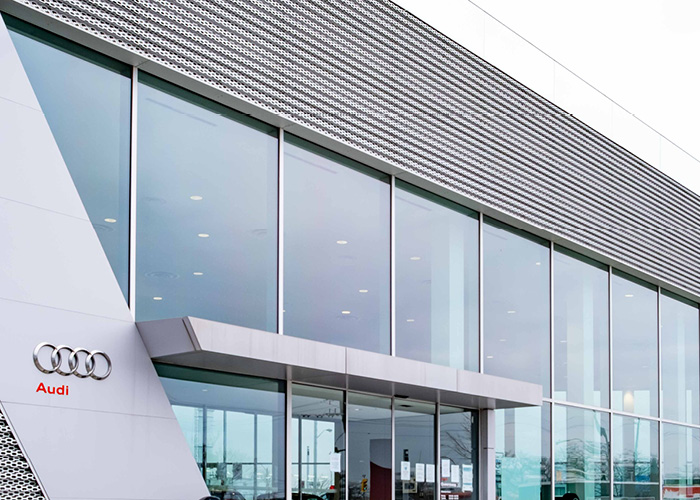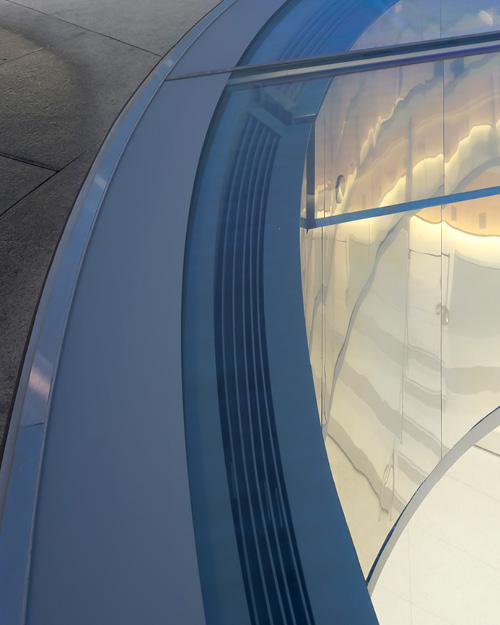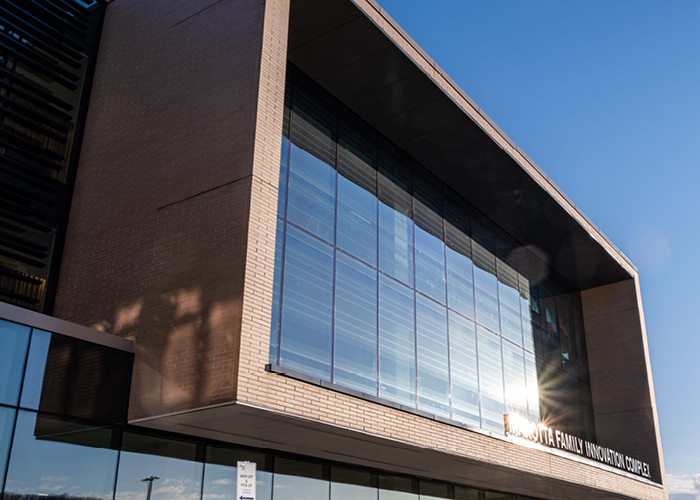Download this handy 1-page information sheet!
Managing Anisotropy in Architectural Glass
NEED TO TAKE THIS PAGE WITH YOU?
Using the ASTM C1901 AGNORA co-created standard and leading-edge tools and measurements to improve clarity.
Leading-edge tools and measurements to improve clarity.
Why does anisotropy occur in architectural glass?
Differences in area stresses create regions with slightly different refraction indexes. Those changes in the speed of light produce optical patterns called anisotropy. A practical example: Have you seen the spots all over your car’s windows? That is anisotropy, and you can see the areas of high and low stress caused by the quenching air jets compressing the material to a different stress.
These inhomogeneities split a single polarized light ray into two perpendicular rays that are slighting out of phase, and without getting into the science of waveforms, the out of phase light will produce the visual disparity we call anisotropy.
There are no two ways around it. You WILL have anisotropy in heat-treated glass, but the amount is largely based on two variables:
- The oven and quench configurations of the oven
- The tempering operator’s skill in heating and cooling glass uniformly.
More simply, the amount of anisotropy you receive figures purely on the quality of your fabrication partner. Until recently, both the glass fabricator and project stakeholders just had trust they were producing and receiving the least anisotropy. We will explore how new standards are improving the outcomes for all parties.
THE IMPORTANCE OF CLARITY
As the thickness of glass increases, heat-treatment becomes necessary to maintain the strength, safety, and durability of the lite.
However, the specification and measurement of anisotropy is often misunderstood, leading to undeliverable specifications, a protraction in quality, and even costly legal disputes surrounding the final output of the glass vs the perceived expectation of the architect or other project stakeholders.
A STANDARDIZED MEASUREMENT
ASTM C1901-21 is a new standard that provides fabricators a systemized measurement method that is repeatable, traceable, and global in nature. The final output is described in a fundamental physical unit, the nanometre (nm), that can be agreed upon and utilized by architects and designers in their final specification. Simply, with C1901-21 it is possible to objectively improve the heat-treating process and agree on a quantifiable anisotropy value between project parties.
A WORTHY ALTERNATIVE
Combined with modern-day interlayers such as Kuraray’s SentryGlas (up to 4x stiffer than conventional PVB). One can achieve almost equal strength to that of thick, heat-treated glass while eliminating all visual anomalies found in the heat-treating process. Further, laminated annealed glass maintains its structure in the event of a breakage, and is not prone to NiS spontaneous breakage, two additional safety and monetary benefits.
Measuring and Reporting Anisotropy
AGNORA offers additional insight into the level of anisotropy or "leopard-spotting" in your high-quality architectural glass. Our knowledgable staff and engineers work with you to establish an acceptable, pre-determined level of anisotropy and provide a final report on the outcomes of each glass lite, giving you the peace-of-mind and knowledge that the level of clarity achieved in your glass is mathematically and physically guarenteed.




